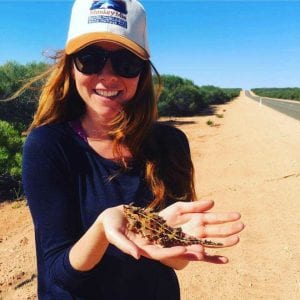Dolphins are almost celebrities of the animal kingdom, globally adored for their intelligence, personality and aerial displays.
But to what extent do we know why they do what they do? Someone who tries to answer this question is Dr Stephanie King, one of the University of Bristol’s newest senior lecturers who has spent years studying these charismatic mammals. Those of us in this Monday’s seminar were treated to a fascinating look into what life is like studying bottlenose dolphin behaviour, and a sneak peak at Dr King’s new research which investigates the mechanisms behind how dolphins communicate, and the ways in which they can coordinate their behaviour.
Firstly, Dr King introduced us to the social structure of bottlenose dolphin communities.
Her research focuses on males, which congregate in groups called alliances, of either first (2-3 individuals) or second (4-14 individuals) orders. Alliances are aggregates of males, who form lifetime bonds with one another to coerce females into copulation with chosen members of the alliance. Associated behaviours have been analysed by Dr King and her colleagues during follows of the KS alliance, which habituates Shark Bay in West Australia. Currently made up of 7 males, each member can be confidently identified from characteristic nicks and cuts in the dorsal fin of each individual, acting almost like dolphin fingerprints. We were also told that alliance hierarchy is mysteriously complex: there is no linear dominance hierarchy; allied preference is not with kin; and that in fact age (mainly bonding in the juvenile period) can predict alliance formation. The adaptive value of these alliances is high, as male fitness (lifetime reproductive rate) is dependent on alliance formation and membership.
Throughout her talk, Dr King ensured the audience saw the dolphins in action, allowing us to understand and visualise exactly what the behaviours were that she was talking through.
This was done with the use of drone footage that accompanied the explanations, which included incredible birds-eye view shots of phenomenons such as the coordinated butterfly display. Other alliance behaviours explained by Dr King were those such as a ‘tangos‘ and petting.
Not only are visual behaviours important for the efficient functioning of the alliances, but so are acoustics.
‘Pop trains‘, like the name suggests, are a series of successive popping sounds which encourage females to come closer to the males. Dr King and colleagues wanted to know if these pop trains could be synchronised within the alliance. The adaptive value of this was discussed, one idea being that it could possibly encourage bonding through cooperation by promoting oxytocin release. Also posited was that highly synchronous pop trains could be a signal of a high-quality alliance.
Dr King gave the audience a first look at some unpublished research
While the ability of the dolphins to cooperate has been steadfastly proven, the question remains whether the dolphins actually understand what cooperation is; that is, do they understand that they need the exact role of their partner in doing certain tasks (Fig. 1)? Or are individuals actually responding to learned social and environmental cues? Dr King gave the audience a first look at some unpublished research that is pulling apart the possible mechanisms behind previous findings regarding these ideas. Dr King signed off the seminar with other suggested hypotheses for further study, such as whether personality influences cooperative partner choice. The seminar concluded with an animated Q&A and some lively debate, which without doubt continued afterwards in the Sky Lounge over lunch.

Written by Esme Hedley, Biology (BSc) Year 2
Find out more information:



